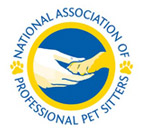They don’t call them “man’s best friend” for nothing! Domestic dogs have for thousands of years lived with humans in various capacities, from aiding in hunting to protecting livestock. In order to perform these functions, dogs learned to communicate with people and perform as their owners wished.
Dogs are highly sensitive and responsive animals. They can tell when their owners are happy, sad, or nervous, and they may express these emotions themselves.
Because dogs do have feelings, and intelligence that may be compared to that of a toddler (some breeds are as smart as a human seven-year-old!), it’s important that you refrain from treating your pet negatively. Continually shouting at a small child may scare him into submission, but it probably won’t make for a happy or healthy young person in the long run, even if he does obey.
Your dog does not understand that you’re angry he got into the garbage bin; for one, dogs get into things because they’re dogs, and for two, his brain just isn’t going to connect your harsh tones and loud movements with all the fun he had with leftovers this afternoon. Just as with small children, dogs need to be coerced into behaving well with smiles and cheer.
Your pet will understand when you’re unhappy with him, but he won’t understand why so well as the fact that you just are. That’s why it’s important to work on refining your dog’s behavior in a different way, with positivity.
Positive reinforcement is one of the best methods of training your dog. It’s easier for your dog to understand what he did right, rather than grasping the concept of some arbitrary human rule he didn’t follow (such as resisting sticking his muzzle into the appealing-smelling trash bin). When you’re happy, your dog is happy as well.
As such, two of the best ways to train your dog are with enthusiasm and with puppy treats. Both of these need to be awarded to your pet immediately after he performs the desirable action, so that he understands and repeats it again.
Because dogs understand human emotions so well, it’s key to praise him when he does something correctly, even if it’s by accident. Use upbeat vocal tones, and repeated phrases like “Good dog!” Respond in this way when your dog completes commands, and pair it with petting and physical affection when you’re really proud.
Treats are a great idea for training. Your pet gets a treat for sitting instead of jumping on visitor, for not barking when the doorbell rings, when he fetches an item, and so on. As long as they don’t trigger a food allergy, treats are a safe and effective way for modifying behavior and completing training. Be patient at first, since your dog probably won’t understand right away.
It doesn’t take much to make dogs happy–pets and treats, please! Check out the infographic below for more on how to get your pet to please you with positive reinforcement.












Speak Your Mind